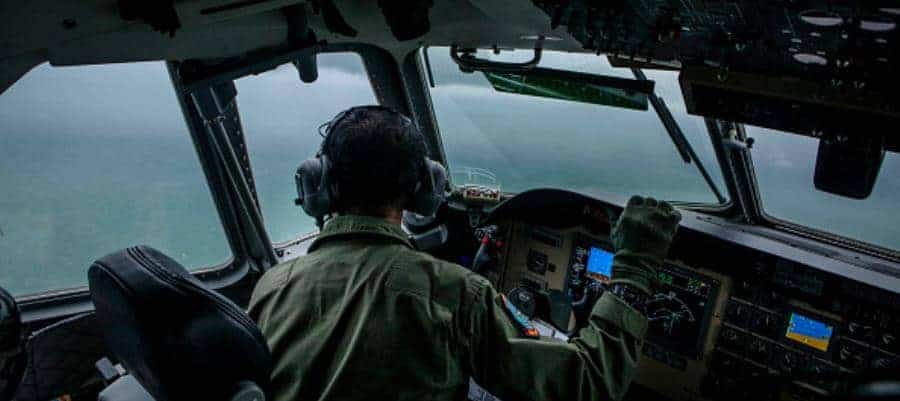Doomed AirAsia flight 8501 may have made a successful emergency water landing, only to be overcome by rough seas, analysts say.
The aircraft apparently failed to send the transmissions that should be emitted when a plane crashes, after it disappeared from radar over the Java Sea on Sunday while flying from Indonesia to Singapore.
According to experts, this suggests that the pilot of the stricken plane may have made a non-destructive emergency water landing but that high seas then consumed the aircraft, sinking it.
“The emergency locator transmitter (ELT) would work on impact, be that land, sea or the sides of a mountain, and my analysis is it didn’t work because there was no major impact during landing,” Dudi Sudibyo, a senior editor of aviation magazine Angkasa, told AFP.
“The pilot managed to land it on the sea’s surface,” he said.
Australian aviation expert Geoffrey Thomas in Australia backed up the theory that the AirAsia flight hit the water largely intact. According to The Guardian, Thomas said that the few bodies so far recovered may have come out from a breach in the fuselage.
“But most passengers still should have had their seat belts on, particularly as the plane was going into weather,” he said.
“The captain would have still had the seat belt sign on.”
An international operation, including over 50 ships and an unmanned submarine, is searching the area of the Java Sea where the plane is understood to have gone down.
What appear to be large parts of the Airbus A320 have been identified by sonar, but as yet it cannot be confirmed that it is indeed the plane.
“There was something like a dark shadow once seen from a plane, but it cannot yet be proven as wreckage,” Indonesia air force spokesman Rear Marshal Hadi Tjahjanto told reporters.
Tjahjanto added that the focus of the search was to locate the main body of the aircraft as well as its black box flight recorders which will help determine the events that led to the plane’s downing.
What ultimately caused flight QZ8501 to crash is still unclear. However, in their final communication with air traffic controllers, the aircraft’s pilots requested to climb above severe storm clouds but were reportedly denied due to heavy traffic. The plane disappeared from radar four minutes later.
The bodies of nine victims of the AirAsia crash have so far been recovered from the sea, along with other minor debris from the doomed flight.
IMAGE: An Indonesian marine patrol looks out over the waters of the Java Sea near Pangkalan Bun, during a search and rescue operation for passengers of AirAsia flight QZ 8501 on January 01, 2015. A massive recovery operation has begun following confirmation from Indonesian officials that remains and debris found in waters off Borneo are from the missing AirAsia plane. Flight QZ8501 from Surabaya to Singapore, with 162 people on board, lost contact with air traffic control at 07:24 a.m. local time on December 28. (Photo by Ulet Ifansasti/Getty Images)












